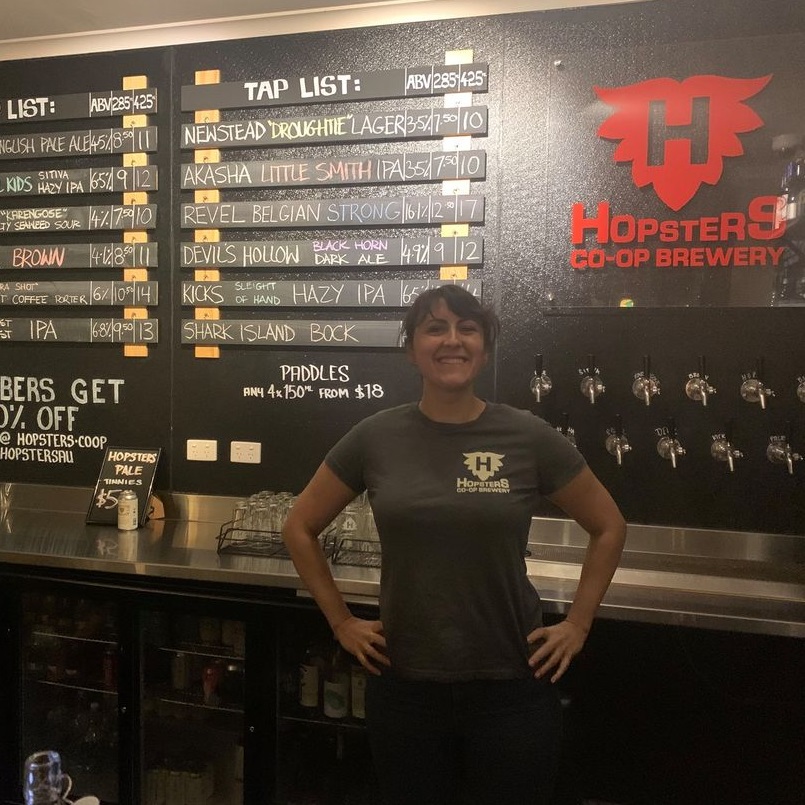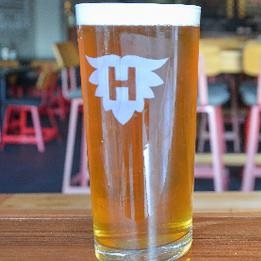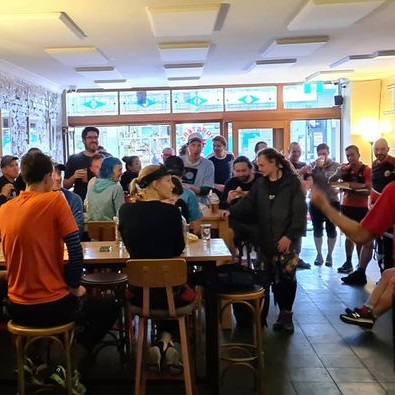
Brewing co-operatives creating radical communities
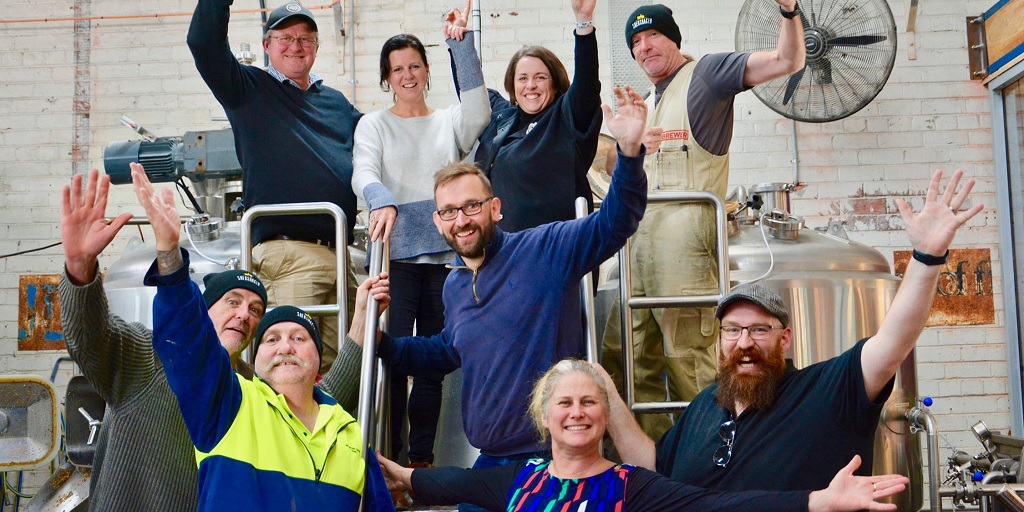
Members of the Rock & Ranges co-operative
Breweries are built around communities both manufactured and organic, and co-operatives are some of the most dedicated communities around.
Unlike equity crowdfunding communities, which invest in the company but have little to do with the day-to-day running of the business, members who invest in co-operatives must be actively involved in the business in some way, and also have the exact same voting power as everyone else.
Two breweries in Australia, Rock & Ranges Brewing Co-operative in Victoria’s Macedon Ranges and Hopsters Co-op Brewery in NSW, have employed this business model to great effect.
Hopsters declared itself Australia’s first co-op brewery in 2016and has been growing its membership ever since, according to board member Byron Lotz.
“Marco [Vargas] was member number one, he looked at the States and found there were a few of them there with this structure,” explained Lotz.
“Without having to put all the money behind it, you can use that group force to keep it going, that’s why the co-op was developed so we could accomplish it with everyone’s help.”
It is the dream of beer fans across the country to open their own brewery, but very few ever manage to make it a reality.
“Everyone walks into a brewery and loves being in a brewery. Whether you like beer or not, there’s an appeal to drinking next to stainless,” Lotz said.
“But the work [of building a brewery] takes a lot of financing. With the co-op model, you can buy in and get a portion, without having too much risk.”
While Hopsters’ original ambitions of attracting 5,000 investors may have been a bit ambitious, it does now have well over 700.
Rock & Ranges operates under the same fundamental rules with around 120 members, but there are some distinct differences in its operational model, explained founder and board member Luke Spielvogel.
“We started out as all breweries tend to, like-minded people who want to brew. We ended up producing a lot of beer and needed to do something with it – as every homebrewer anywhere has ever said to each other after they’ve drunk a few, ‘let’s start a brewery!’
“But I’ve always been interested in alternative structures and social engagement, and how business and commerce can be used for good,” he said.
“At the same time we were starting to see the model of our favourite breweries. They would build a cool, localised brand, then they would wait for one of the big boys to come and buy them out, and that’s not what we wanted.
“We wanted to do something of the people, where members would be our customers and people that worked with us.”
The approximately 2,000 co-operative and mutual businesses in Australia have a combined turnover of $35.3 billion and makeup nearly 1.5 per cent of the nation’s employment, according to the latest report from the Business Council for Co-operatives and Mutuals.
As people move towards more altruistic and ethical business models, we could be seeing more of them in future.
But setting up and operating a co-operative can seem daunting, and there are a number of ways to do it.
How does it work?
There are multiple ways to run a co-operative, but there are some overarching rules under the Co-operatives National Law.
Co-operatives need at least five members, and can be either profit-sharing enterprises or not-for-profit organisations.
These two types of co-operatives, also called distributing or non-distributing co-operatives, work similarly in that their membership structures can be largely the same, but the way of allocating profits is different.
“As a co-op you have to follow certain guidelines like buying shares in the business, partaking in it, you have to have a certain structure with a board of directors and a number of values as laid down by the national board,” explained Lotz.
A distributing co-operative such as Hopsters can distribute any profits to members, so it must have share capital, and the management of a business like this can get a little bit complex.
“We’ve got a board of seven people and they run the pointy end of things, then we have the marketing committee, brewing and finance to help with other parts of it, but the board makes the ultimate decision,” explained Lotz.
“In terms of how it’s all run, financial decisions are made by the board, and we try to get member engagement wherever possible, with beers we’re going to make for instance.”
Profit sharing is part of the distributing co-operative model, but it’s not the main focus.
“In theory if it made a profit, we could reinvest in the business or whatever profit would be shared out to the members, and therein lies the difference,” said Lotz.
“But for the foreseeable future businesses like ours will struggle for some time, so anyone that decides to be part of the process, they wont get their money out quickly, once you put it in there, it’s long term.”
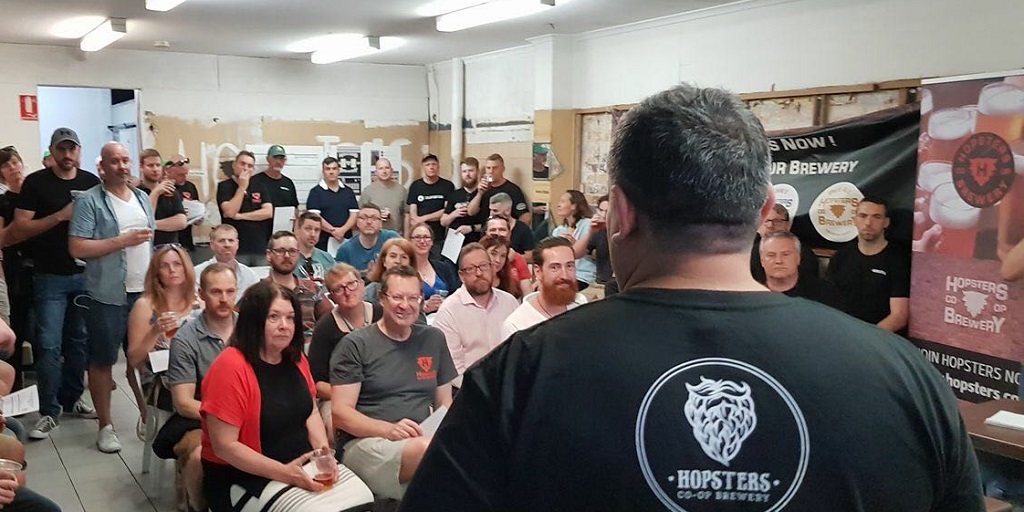
A non-distributing co-operative, like Rock & Ranges, cannot share profits with members. All profits must further the co-operative’s purpose and it usually charges members a regular subscription fee.
“The structure itself, we have a board of nine. Operational decisions are made at board level, but from what beer we brew next to what direction you want to go, that’s done in a few different ways through events like an AGM or a poll,” explained Spielvogel.
“We aim for consensus but also realise that there’s a vote, those decisions are made by the board – the decision over whether to be distributing or non distributing was a big debate.
“Both models bring different things to the table. The distributing model is closer to conventional business in that you put money in to invest with expectation of return. They’re both business models with community at their heart, but non-distributing is a bit more altruistic, it’s a shared experience we want to go on with our members.
“There are so many crowdfunding platforms and investment opportunities out there, so we thought how do we tell that story that this is about genuine engagement?” reasoned Spielvogel.
Engagement is a huge factor in the way breweries operate and market themselves, but for a co-operative the engagement required is a lot more localised.
“You can buy membership and the only real proviso is that you need to be an active member, volunteer, come to an event, or spend $50 at the co-op annually. It’s the same with all co-ops, they have an active member provision.
“At Rock & Ranges, there are pathways for people to get involved in the nuts and bolts, the Brew Crew making and designing beers, the Rock & Ranges experience which does member events, they do a bit of the sales stuff, talk to other venues and those sorts of things.
“Then there’s R&R central, which is our administration function, who go after grants, do accounts and make sure legals are in order. There are some very real ways people can contribute.”
But taking on such a radical business model has its own challenges, especially as COVID-19 hit.
Challenges of a co-operative
Like any other brewery, Rock & Ranges faced the difficulties thrown at it by pandemic shutdowns and restrictions.
“Pretty much straight away with our principal partner Shedshaker we were able to move from kegs to bottles which was great, so we were still able to offer products to bottleshops, and supply members.
“From a financial point of view we were able to keep the doors open and keep the ball rolling, and that’s a big part of what we want to do, produce great local beers but also great member experiences.
“But it wasn’t ideal and there were challenges. We are all volunteers, with added responsibilities around homeschooling and kids, it was a dynamic environment.”
However unlike other more conventional businesses, the model meant that Rock & Ranges was not eligible for government support.
“It was a bit unfortunate in that how we’re structured, we didn’t have employees. So it was great that we didn’t have capital expenses and ongoing costs, but we also didn’t have access to most of the COVID support mechanisms and that’s how it should be – we don’t begrudge that because the priority was around employment and protecting people’s livelihoods.
“None of us depend on this to feed our families, but it was a case of how can we support those that do? Things like making sure we’re still brewing with Shedshaker and helping support them and putting good local product in local retailers.”
But there are more general issues that can come with co-operatives, particularly when explaining the model to local authorities.
“The challenge around it has been how to get a liquor licence when you have 120 people making decisions and on the license?
“You have to go out to these other regulators and explain how it’s different and work out a way to keep the ball rolling.”
The other issue of course is working with a comparatively huge number of stakeholders in the businesses.
“Because of the way we work we have a lot of minds and decision-makers which can slow us down a little, that’s where the co-op is a bit trickier. We’re a bit slower and we’re all doing it on a part time basis, outside of our work,” explained Hopsters’ Lotz.
Even though Rock & Ranges works in a slightly different way, Spielvogel agreed, particularly as he was the founder of the brewery.
“That’s one of the hardest things with this type of co-op, that even as the founder I own as much as the next person that joins up as a member,” he said.
“It’s a baby that I formed in my mind and it’s grown and I’ve become quite attached to it.
“There’s ego in it in that it’s like raising a child, but at some point you have to let them go out into the world. That’s been the biggest challenge in it.”
Co-operative values
While many breweries and other businesses have their own internal values which they attempt to adhere to, co-operatives actually have this encoded within their DNA.
Seven principles were determined and adopted by the International Co-operative Alliance in 1995 which apply to co-operatives around the world. These include non-discrimination within membership bases, democracy, independence and education and concern for communities.
Members are also expected to use or contribute to their co-op financially, and have equal say in the running of the business, and are also expected to help and collaborate with other co-operative businesses where they can.
But this means it can be a huge commitment.
“I don’t get any remuneration from anything, all the time and effort is all my own, even fuel costs when I do sales and things, I just donate it to the co-op,” explained Hopsters’ Lotz.
“We have meetings every couple of weeks, and we all do it as a passion project rather than anything, and we have 700 members that rely on what we do.”
“Some people generously put more money in and we’re eternally grateful to them. The entire enterprise is member-funded, there’s no external money at this point which is significant.
“[Ultimately] the people that come in and do things and contribute are the people that help shape the co-op.”
Plans for Hopsters will see it continue to add to its membership base.
“We want to have members, now we’re all within NSW but we’re allowed to have members across the country, so in theory we could have a satellite venue.
“That way if we have members in Brisbane we can have that model up there, that would be amazing and we see what kind of timeframe we can do that in, but COVID has definitely slowed us down.”
Despite the challenges, Hopsters opened its first taproom last year in Sydney, and its next mission will be investing in its own brewkit.
“It will be a fully functioning member of the beer community, we want to get the brewery open, we want to get an excise licence for the back of the taproom and we will install a small brewkit.
“We got the site now we’re just jumping through the hoops about getting the licence.
“We can utilise our membership base for help. Structural engineers, lawyers, painters, general handymen, they’re all members and it makes a huge difference to be able to tap into that pool.
“That’s the beauty of the co-op, we all contribute to this one goal.”

